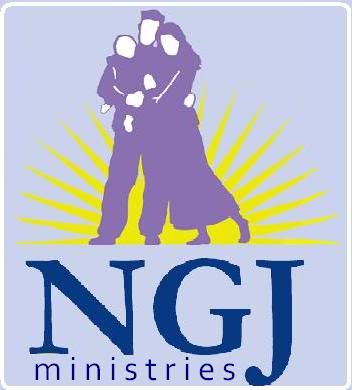Ever[y] medicine cabinet should have an emergency supply of activated carbon, especially those with young children in the household. However, this is not good news for the pharmaceutical companies who have reacted by refuting some of the claims made in its favor: they have claimed that it is not effective against arsenic. If that is so, then how did Michel Bertrand survive after swallowing 5 grams of arsenic trioxide – 150 times what is regarded as the lethal dose? He did this is 1813 after mixing it with activated charcoal, just as Professor Touery was to do 18 years later with ten times the lethal dose of strychnine. [http://vitanetonline.com/forums/1/Thread/1270]Locating Activated Charcoal
If a local retailer carries Activated Charcoal, it may be wise to stock up. A recent shopping trip revealed that this powder can no longer be purchased off of the shelf in pharmacies near my home. A local health food store only retailed the powder in capsule form. The pharmacists told me that poison control centers and the American Academy of Pediatrics had expressed reluctance to recommend this for in home use. Reasons given included liability concerns and caregiver inexperience (or ignorance) in administration.
However, this limitation also means that potentially life-saving help is delayed in emergency situations.
Whether you are able to purchase from a trusted source or must make your own, Activated Charcoal will prove useful in a number of applications. (click here for article on how to make your own charcoal).
Oral Use of Activated Charcoal
Activated Charcoal can help with mild digestive upsets, stop diarrhea, viral and bacterial infections. Activated Charcoal adsorbs toxins, renders them inert and carries them through the digestive tract. Charcoal is not metabolized or digested by the human body. It is a valuable aid in the treatment of accidental poisonings. The powder can be placed in the mouth and moistened with saliva for swallowing. It is also possible to administer it as a slurry, in crackers, or in tablet form.
Warnings:
- Charcoal may adsorb and inactivate other medications. Do not take charcoal within two hours before or after other drugs.
- If you are taking prescription drugs, check with your doctor before beginning treatment with charcoal.
- You can take charcoal intermittently for long periods or regularly for up to 12 weeks.
- Activated charcoal should NOT be used for accidental ingestion of cyanide, mineral acids, caustic alkalies, alcohol or boric acid.
Guidelines for Oral Applications
BEFORE administering Charcoal, vomiting should be induced to bring up about 30% of the stomach contents. For the remaining 70%, Activated Charcoal should be administered. An individual should be conscious before Activated Charcoal is administered. Recommended dosage is 1/2 ounce (measure by weight) for children and 1 ounce (weight) for adults. Usual dosages are from 5 to 50 grams, dependent upon the amount of poison ingested and the body size.
Adults should receive at least 30 grams, or about half a cup of lightly packed powder. Larger doses are needed if the person has eaten a meal recently. A dost of 200 grams is not excessive in severe poisoning cases. [http://healingtools.tripod.com/thn5.html]
Activated Charcoal can be given with fruit juice, chocolate syrup, jam, honey or other liquids that help ease swallowing. Ice cream would make AC less effective and is not recommended. Dosages can be repeated every four hours or until charcoal appears in the stool. Charcoal may not work in all cases. Seek additional medical care and call the poison control hotline (if available) for recommendations specific to your circumstance.
Gas and Indigestion
Activated Charcoal adsorbs excess gas and bacteria that forms gas in the digestive tract. Diarrhea can also be relieved by taking Activated Charcoal. This can be taken in the form of tablets or a slurry (between 1 teaspoon and a tablespoon of powdered charcoal 3 times per day). This is best taken on an empty stomach for increased effectiveness.
[http://healingtools.tripod.com/thn5.html]
Slurry
Place 4 TBS of activated charcoal in a pint size jar of distilled water, shake it up to mix well, and use it as needed.
Many viral infections respond well to charcoal slurry, especially if taken within a few hours of onset. Histamine reactions to some sort of allergen, which causes sneezing, weeping eyes, coughing, sore throat, etc. also respond well to early administration of Activated Charcoal.
[http://www.buyactivatedcharcoal.com/stories_2006]
Charcoal Crackers (Biscuits)
The symptoms of ongoing digestive upsets can be greatly relieved by eating charcoal crackers (biscuits).
Cut 1/3 cup butter (or coconut oil) into two cups of plain flour flour, 1 tablespoon baking powder (aluminum free) and 1/4 teaspoon of salt. Add about 3/4 cup whole milk with (I add a couple of tablespoons yogurt to mine) until a soft dough is formed. Let this sit for as much as 7 hours, less if you are in a rush. Add 1 tablespoon of activated charcoal to the dough and mix well. Drop by tablespoonfuls onto a parchment paper lined baking sheet. Cook in a 450 degree oven for about 12 to 15 minutes. This can be eaten to help with ongoing digestive upsets.
[http://www.buyactivatedcharcoal.com/biscuits]
Dog Breath Biscuits
Even your pets can benefit from Activated Charcoal.
For your dog's bad breath, make your favorite biscuit recipe using 2 cups of flour, 1 tablespoon of activated charcoal, milk for the liquid. Add an egg, 1/2 cup mint and parsley along with butter for your oil. Bake at 400 degrees for 12-15 minutes.
[http://www.dogpatch.org/agility/FAQs/faqmis07.html]
Available in Tablet Form
Activated Charcoal tablets or capsules should NOT be used for poisons as it doesn't act as quickly as powder.
[http://www.oklahomapoison.org/general/activated.asp]
Uses for Tablets
Chew tablets and/or suck them in mouth allowing the charcoal to gradually slip down throat. This can treat a sore throat and bad breath, although the blackened teeth (before rinsing) may still chase people away. Some recommend that the powder or chewed tablets be left between the gum and cheek during the night and rinsed (or swallowed) the next morning as a way to help persistent bacterial mouth infections.
Tooth Powder
Use as a tooth powder with or without other pastes or powders. This will trap bacteria and help treat gum and tooth disease.
Topical Applications -- Poultice
Topically, Activated Charcoal is a powerful poultice for skin irritations. Charcoal compresses help speed the healing of wounds and eliminate their odors
Place 1 to 2 tablespoons of Activated Charcoal powder into a sterile glass container. Add just enough distilled (or purified) water to make a paste. Spread this paste onto a thin, clean cloth and fold the cloth over onto itself. Place this poultice firmly onto the skin and cover the poultice completely with plastic to hold in the heat and moisture. The Activated Charcoal will draw bacteria and poisons through the skin and into the poultice. Keep the poultice moist and warm to speed healing. Fix the poultice in place with adhesive or strips of cloth. Change every 6 to 10 hours.
Caution:
Placing activated charcoal directly on broken skin can result in a tattooing effect.
http://healingtools.tripod.com/thn5.html
For more reading and resources, click on this link.
Click below for a video featuring Dr. Christine Salter interviewing John Dinsley, author of the book Charcoal Remedies.com, The Complete Handbook of Medicinal Activated Charcoal and Its Applications. (You can read his book online here: CharcoalRemedies.com).








No comments:
Post a Comment